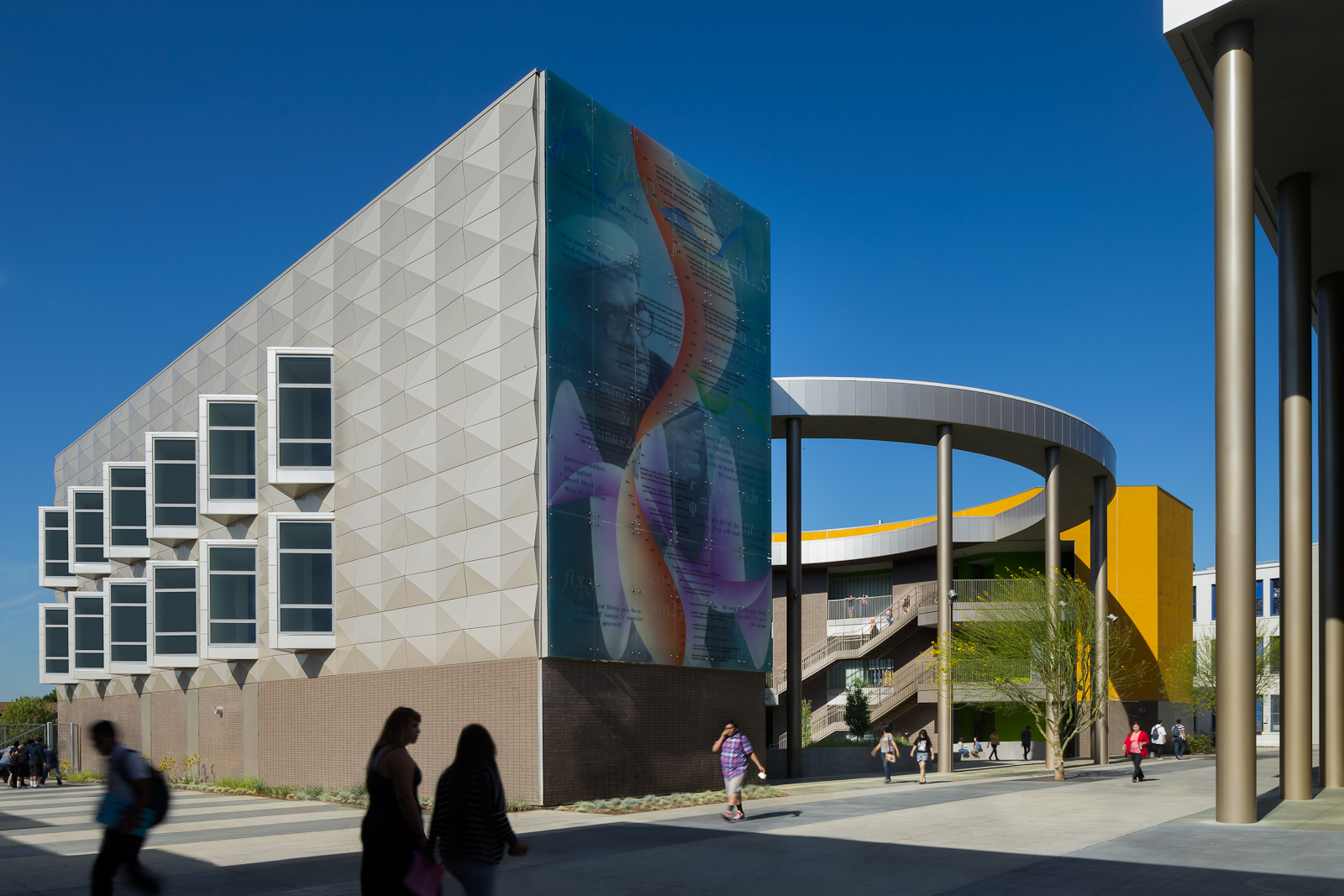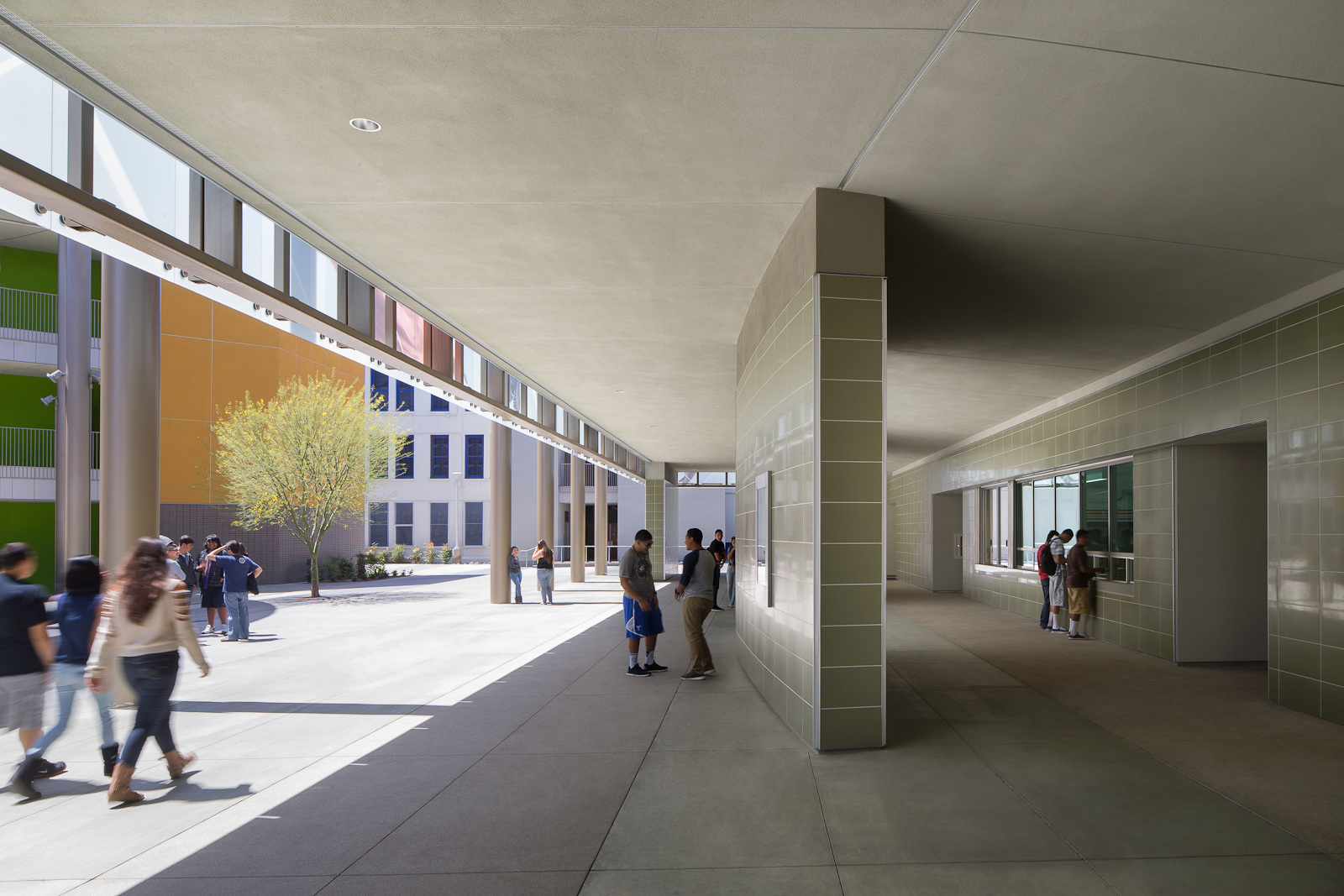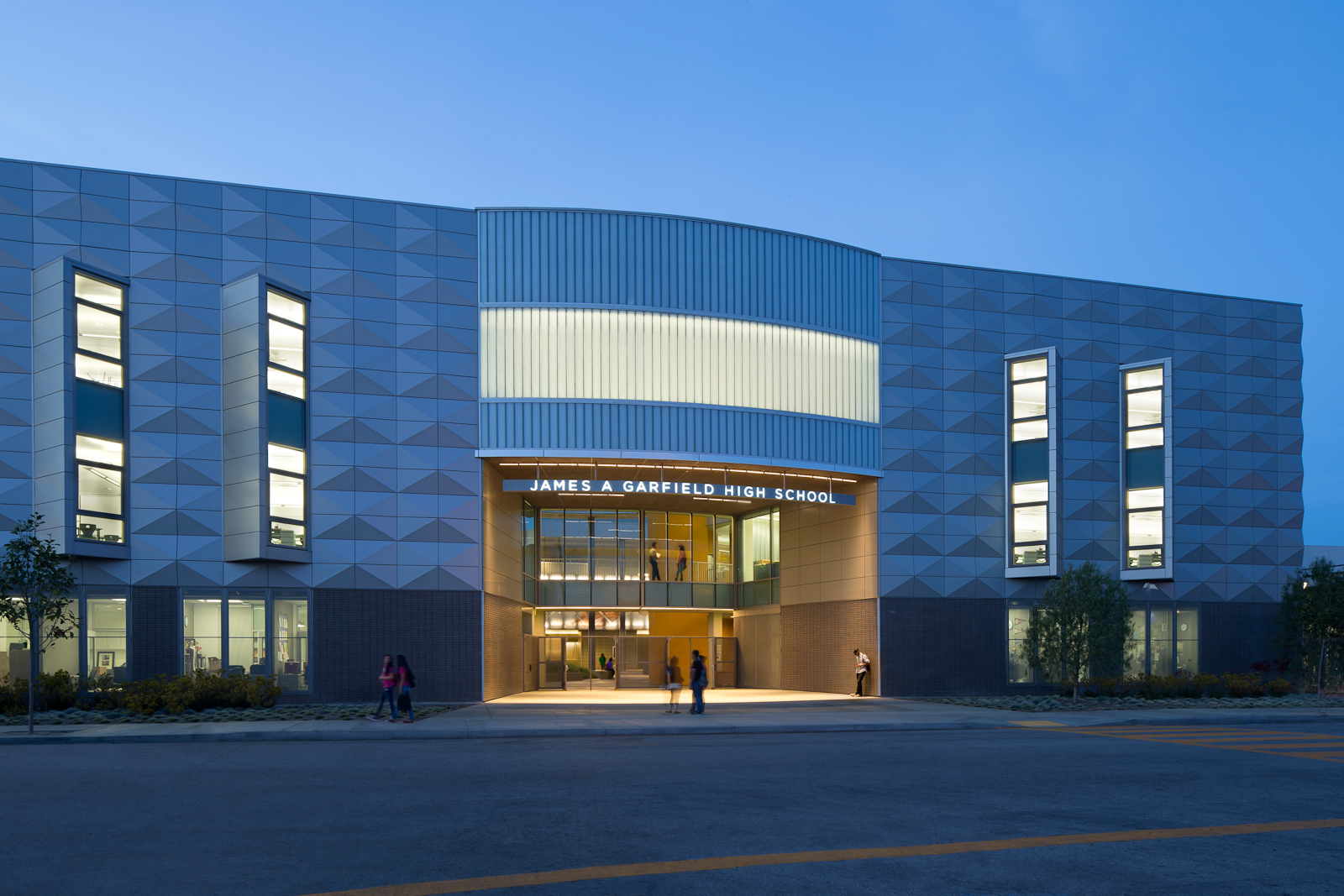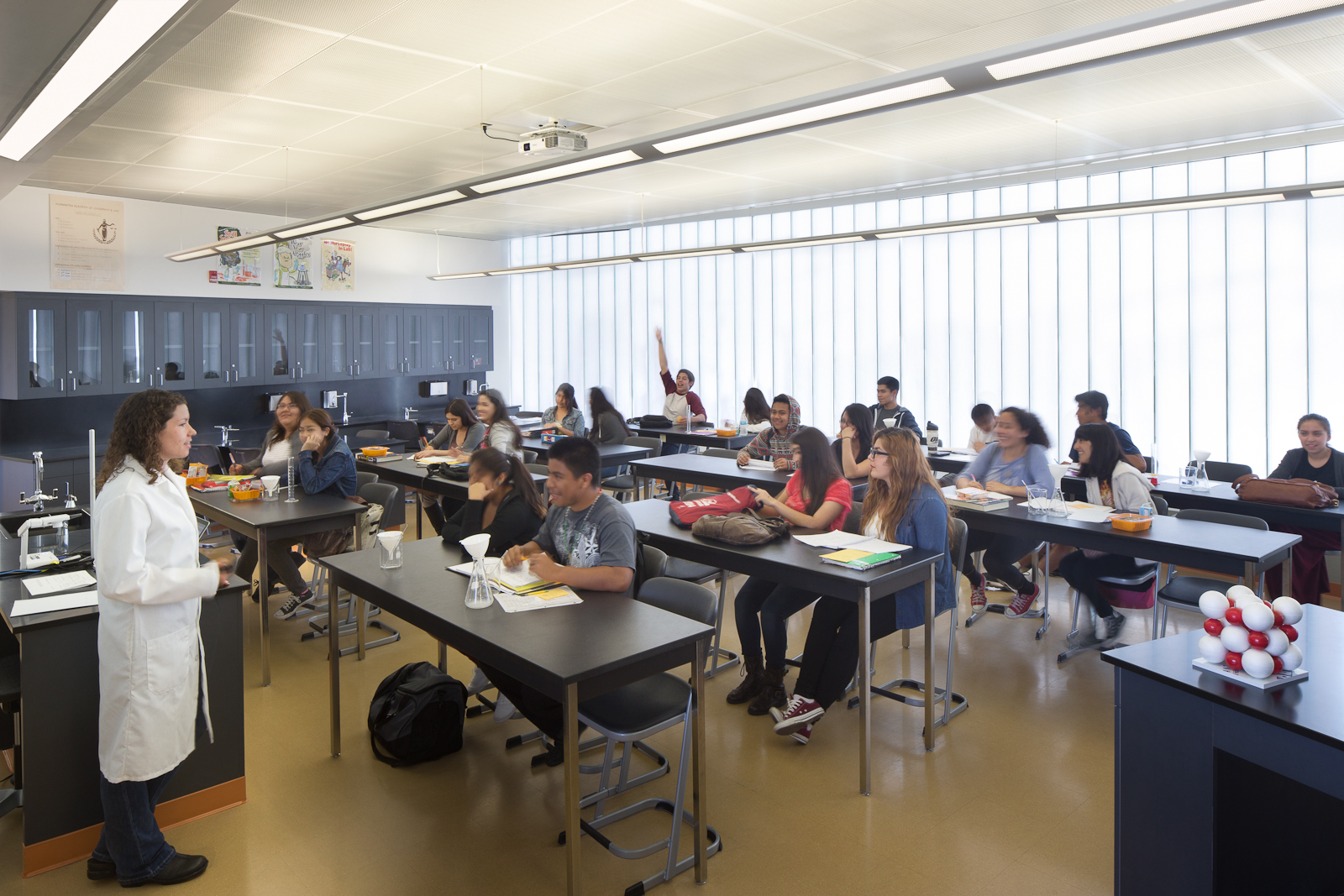New buildings usher in a new era for historic high school
James A. Garfield High School is a public high school founded in 1925 in East Los Angeles. The school gained national attention in the early 1980s when calculus teacher Jaime Escalante built the school’s advanced placement program and ushered a record number of students to pass their College Boards—the story was later the basis of the film “Stand and Deliver” starring Edward James Olmos. Continuing Escalante’s legacy, the school has strengthened the progressive learning environments for its students, including adding an expansive new performing arts complex and a new classroom and administration building.
The original auditorium, constructed in 1924, was badly damaged by arson in 2007. The goal of the auditorium replacement was to combine the essence of the historic building with 21st-century performing arts facilities while retaining its role as a center of activity for the East Los Angeles community.
The team of CannonDesign and John Sergio Fisher & Associates designed the new auditorium, which provides students with state-of-the-art performing arts spaces and studios. The new complex offers environments for those students interested in pursuing the arts and entertainment industry—striving to both honor the school’s past while propelling students into the future. The design replicated the original auditorium’s paneled ceiling, wood seating and trim features, and utilized chandeliers salvaged from the fire. The result is an auditorium with a new acoustical system for music, theater, and dance, and a space that is adaptable for a range of functions.
The classroom and administration building creates a new main entrance onto the campus that is centered on a collegiate courtyard designed to inspire and build a socially responsible community. Science and technology classrooms are interconnected on the third floor for collaboration among STEAM team members. All classrooms make use of expansive walls of shaded channel glass, diffused north-facing windows and skylights to reduce energy usage and provide expansive access to natural light.
Community involvement played a key role throughout the campus, with local artists involved in creating murals, including a large mural paying homage to the late Escalante. Four public art components were incorporated into the design, honoring academic achievement and local heritage. The project achieved High Performance Incentive (HPI) approval and is designed to meet the Collaborative for High Performance Schools (CHPS) certification criteria, demonstrating responsibility and stewardship to the environment.






